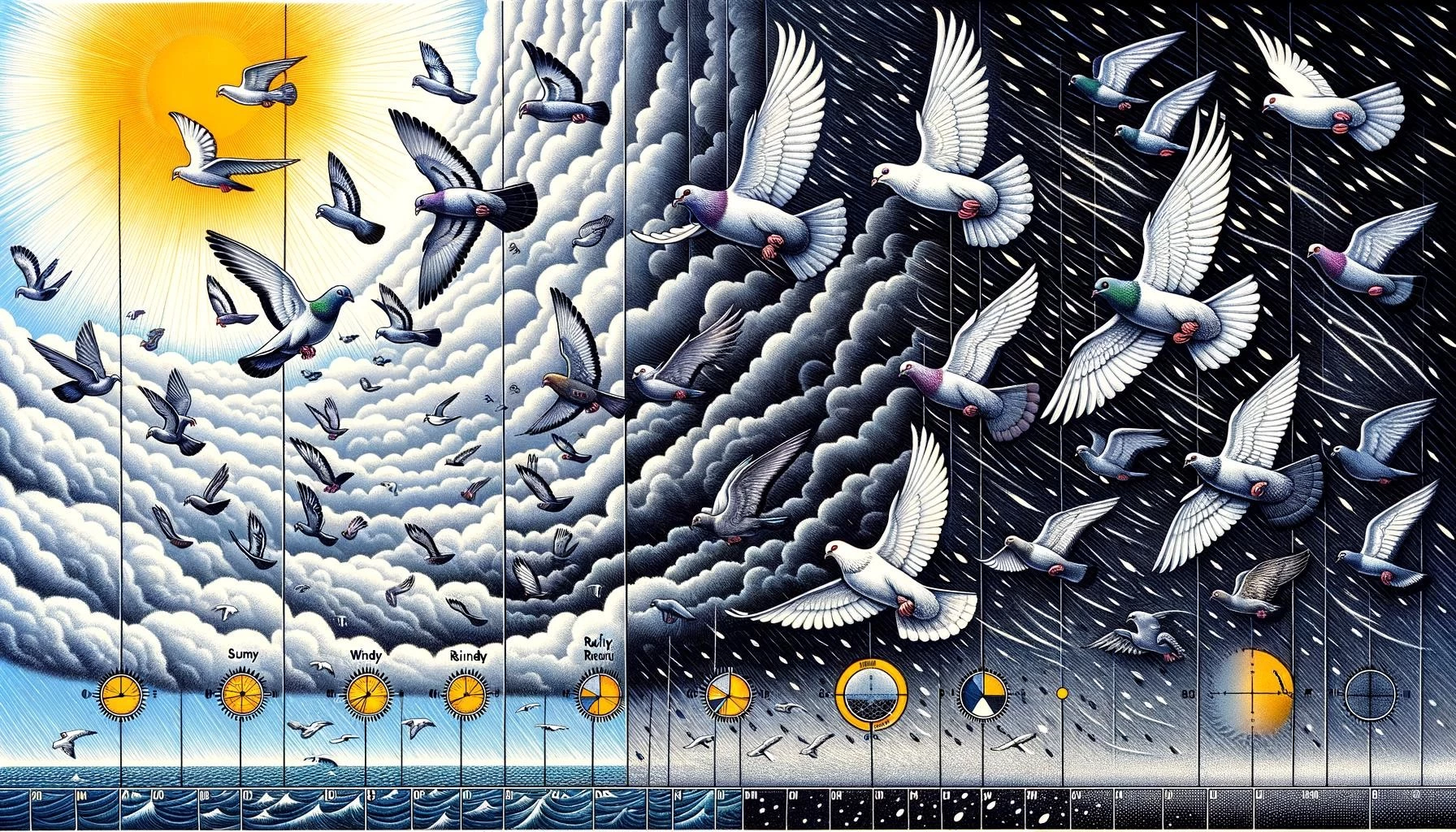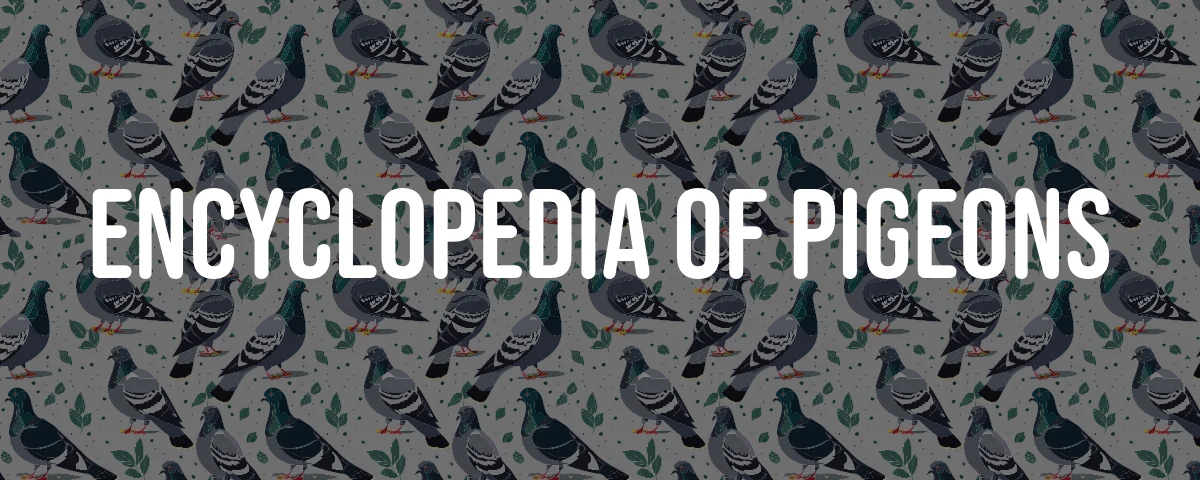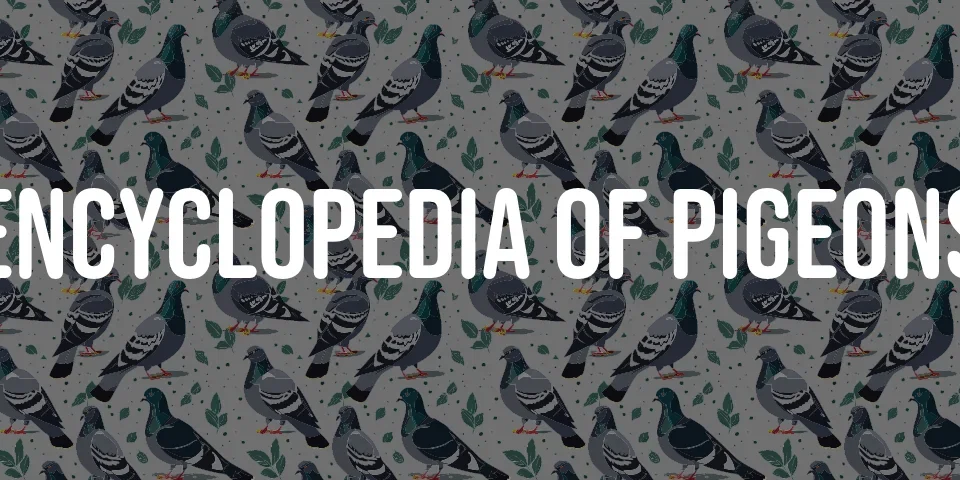The Old German Turbit, a hypothetical pigeon breed, combines the distinctive characteristics of the Old German Owl and the Turbit pigeon. This breed, while not officially recognized or existing in reality, would theoretically exhibit traits that make both parent breeds popular among pigeon fanciers. The Old German Owl is known for its friendly demeanor and distinctive appearance, while the Turbit is celebrated for its compact body, short beak, and frilled feathers on the neck.
Key Data
| Characteristic | Description |
|---|---|
| Origin | Hypothetically Europe |
| Body Type | Medium, compact |
| Head | Relatively large compared to body, with a well-defined frontal |
| Beak | Short, resembling that of the Turbit |
| Neck | Broad and slightly arched |
| Eyes | Large and prominent |
| Legs | Medium size, red in color |
| Plumage | Usually white with colored wings, frilled feathers on the neck |
| Weight | 227-285 grams (average mature body weight) |
| Purpose | Exhibition, flying, pets |
| Flying Ability | Excellent |
| Temperament | Friendly, energetic, and athletic |
Appearance
The Old German Turbit, in this imaginative scenario, would be a medium-sized bird with a compact body, illustrating an erect and graceful carriage. Its head would be relatively large in proportion to its body, with a broad skull and a good frontal, giving it a distinctive and alert appearance. The breed’s neck would be broad and slightly arched, contributing to its noble posture. The eyes, large and prominent, would be set off by fine white ceres, adding to the bird’s expressive face.
The hallmark of the Old German Turbit would be its short beak, a trait inherited from the Turbit pigeon, allowing for a unique facial profile among pigeon breeds. The legs would be of medium size and red, a common characteristic in many fancy pigeon breeds.
One of the most striking features of the Old German Turbit would be its plumage. The body would typically be white, with colored wings that could include a variety of shades such as black, blue, dun, red, silver, yellow, mealy, and cream. Adding to its elegance, the breed would feature frilled feathers on the neck, a trait that is both decorative and indicative of its Turbit heritage.
Behavior and Temperament
The Old German Turbit would be known for its friendly and cheerful disposition. These birds would be fairly tame, making them excellent pets and show birds. Their energetic and athletic nature would not only make them a delight to watch in flight but also contribute to their popularity in flying competitions.
Uses
Primarily, the Old German Turbit would be bred for exhibition, flying, and as pets. Their beautiful appearance and excellent flying ability would make them a favorite among pigeon fanciers for show purposes. Additionally, their friendly nature would make them suitable for keeping as pets, providing companionship and entertainment to their owners.
Interesting Facts
- The Old German Turbit would hypothetically be a result of selective breeding between the Old German Owl and the Turbit pigeon, aiming to combine the best traits of both breeds.
- This breed would be a testament to the diversity and adaptability of domestic pigeons, showcasing the wide range of physical and behavioral traits that can be achieved through selective breeding.
- The Old German Turbit would serve as a reminder of the role pigeons have played in human history, not just as messengers and food sources but also as companions and subjects of fascination.






